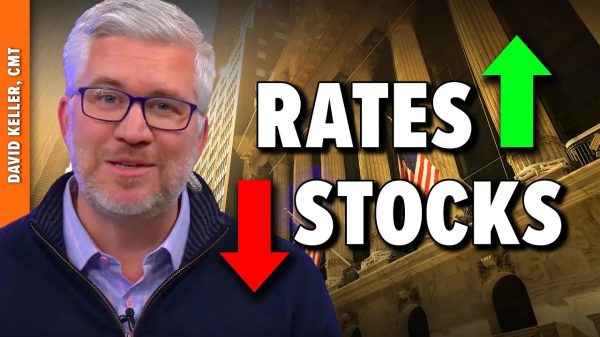Ryan Bourne
As I outlined in “Five Fiscal Truths,” the United States faces an alarming fiscal outlook characterized by historically high budget deficits, high accumulated debt levels, and the prospect of further debt escalation driven by an aging population and elevated interest rates. But some people look at the same budget numbers and yet remain relaxed about the country’s fiscal situation.
So here are three economic arguments I present in my new policy analysis for why policymakers should reduce deficits now, even if a fiscal crisis doesn’t appear imminent.
1. As Insurance against an Acute Fiscal Crisis in the Future
If the United States ever did face a fiscal crisis in the future, it would bring financial and economic chaos. Historically, fiscal crises come slowly and then suddenly; they represent sudden changes in investors’ perceptions about their prospects of being repaid. This could be triggered by an unexpected event—such as a war, another pandemic, or a major recession—substantially worsening the debt outlook. Or it could simply reflect changing sentiment about the country’s existing trajectory.
If investors were to lose confidence in the federal government’s ability to repay its debts, they would demand sharply higher interest rates. A sharp surge in bond yields would feed directly into a higher deficit, with extra borrowing then driving up yields further in a so‐called fiscal doom loop. Eroding investor confidence, heightened macroeconomic uncertainty, and a growing sense that the government might eventually lean on the Federal Reserve to print new money to fund the government (risking higher inflation) would result in steep declines in the dollar as money flees from dollar‐denominated assets.
Higher interest rates would squeeze private‐sector investment and would cause financial turmoil by wreaking unexpected havoc with asset values. The federal government would find it very difficult to finance its core obligations, and the only way to avoid leaning on the Fed to print money would entail rapidly closing deficits with deep austerity cuts to government spending, large tax increases, or both.
A fiscal crisis thus inevitably ends with some combination of a default, sharp and painful austerity, or high inflation. True, the country could always meet its nominal debt obligations in its own currency by printing money (though relying on the Fed to acquiesce would undermine central bank independence). Yet the result would be a sudden burst of damaging inflation and shot credibility in bond markets. These risks might be small, but they are real.
Despite the unsustainable nature of the federal finances on current policies, markets clearly haven’t concluded that the US government is insolvent yet. Inflation expectations don’t show signs that people expect the Federal Reserve to fund the government anytime soon either. However, fiscal crises are unpredictable. Ratings agencies have woken up to the United States’ budget outlook and the lack of political interest in mitigating the flow of debt.
Furthermore, modeling from Penn Wharton suggests that the United States has two decades to stabilize the national debt relative to gross domestic product (GDP), after which no combination of tax hikes or spending cuts would prevent an explicit default or an implicit one (with debt monetization).
Deficit reduction today can thus be somewhat of an insurance against the tail risk of a genuine fiscal crisis occurring, with all the disruption that would bring.
2. As Insurance against Bad Policy Stemming from a Fiscal Crisis, Real or Perceived
Undertaking deficit reduction now, rather than waiting for a crisis, is also prudent because policymaking during panics can itself be economically destructive. If we were to experience an acute fiscal crisis, politicians might reach for measures like wealth expropriation to ease the inevitable cocktail of defaults, rapid deficit reduction, and higher inflation. That erosion of property rights would undermine people’s willingness to save and invest in the United States.
Even if a full‐blown fiscal crisis doesn’t occur, we regularly see that sudden panics lead to policies being adopted that can do long‐term harm. We saw this in the Great Depression (with extensive industrial policy and price and entry regulations); in the Great Recession (which exacerbated the demand for government bailouts during downturns); and with the reaction to the COVID-19 pandemic (where all sorts of unevidenced social restrictions were imposed).
On tax and spending policy, too, waiting until there’s a perceived emergency can lead to bad decisions. In Europe, governments resorted to tax‐rise heavy deficit reduction programs in the 2010s, which evidence from the late Alberto Alesina showed were more harmful to output and debt levels than equivalent spending cuts would have been. In other countries, spending on genuine public goods investment was cut, while inefficient government programs and distortive welfare systems were largely protected. Policy changes that cut investment spending and raise taxes can undermine longer‐term growth.
It makes sense when certain unforeseen emergencies occur to allow debt to rise and then smooth the path of deficit reduction over a long period. This helps stabilize marginal tax rates and protect incentives to work and invest. However, maintaining the capacity to do this relies on being confident that such shocks won’t themselves induce a fiscal crisis. That requires running balanced budgets or smaller deficits during stable periods. With unemployment at historic lows and total spending growth in the economy still above its pre‐pandemic trend, now is a good time to deliver deficit reduction over a number of years. Doing so can help avoid more abrupt changes in taxes or spending during crises.
3. Because High Debt Is Associated with Slower Economic Growth
Even if you think I’m overly worried about the risks or costs of a fiscal crisis, empirical studies consistently demonstrate a negative correlation between high government debt levels and economic growth. Economist Jack Salmon has shown that a large existing body of research suggests that a debt‐to‐GDP ratio of around 80 percent seems to be a threshold beyond which government debt can be a big drag on growth. The United States has already surpassed this threshold.
To be clear: crossing some arbitrary threshold doesn’t automatically lead to disaster. This type of threshold analysis also got a bad rap after the work of economists Kenneth Rogoff and Carmen Reinhart presenting a similar result was found to contain a coding error that exaggerated the negative relationship between debt and growth. Yet even those who critiqued that work admitted their own analysis still showed that the mean GDP growth rate tends to be a percentage point lower for countries with debt‐to‐GDP ratios above 90 percent compared to those with debt‐to‐GDP ratios in the 60–90 percent range. That may sound inconsequential, but an economy growing at, say, 2.5 percent per year will double in size every 30 years, whereas one growing at 1.5 percent per year will take about five decades to double.
There are clear theoretical mechanisms through which very high debt may cause this slower growth. Extensive government borrowing, by competing with the private sector for funds, can push up interest rates and crowd out private investment. Debt can fund wasteful and destructive economic activity or government transfers that harm work incentives, undermining the potential productive capacity of the economy. If government debt gets very high, it also raises the prospect of much higher taxes or debt monetization and high inflation, each of which has a range of harmful costs on economic efficiency.
Even aside from the simple budget math I outlined in “Five Fiscal Truths,” deficit reduction would thus help mitigate three risks: of a harmful fiscal crisis, of bad policymaking during a perceived fiscal emergency, and of high debts weighing on economic growth.
























